Photosensitive body for electrophotography, method for producing same and electrophotographic apparatus
Suzuki , et al. March 30, 2
U.S. patent number 10,962,893 [Application Number 16/020,101] was granted by the patent office on 2021-03-30 for photosensitive body for electrophotography, method for producing same and electrophotographic apparatus. This patent grant is currently assigned to FUJI ELECTRIC CO., LTD.. The grantee listed for this patent is FUJI ELECTRIC CO., LTD.. Invention is credited to Seizo Kitagawa, Yuji Ogawa, Shinjiro Suzuki.
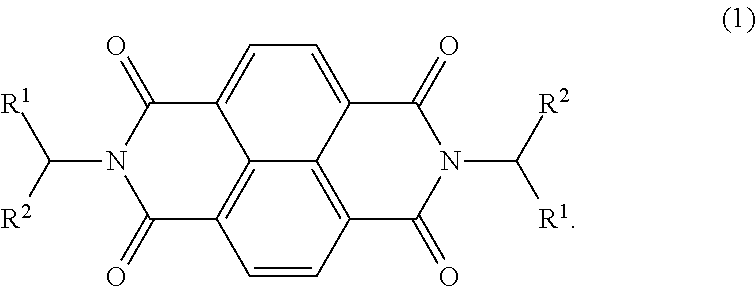
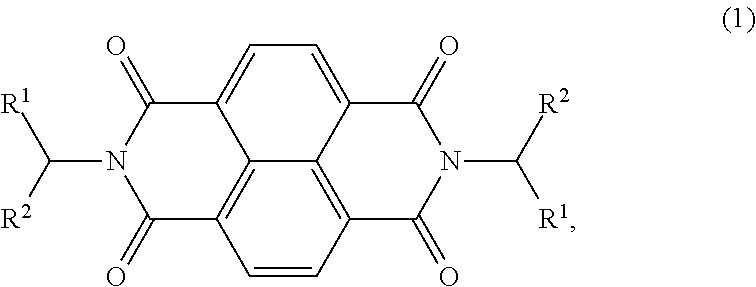


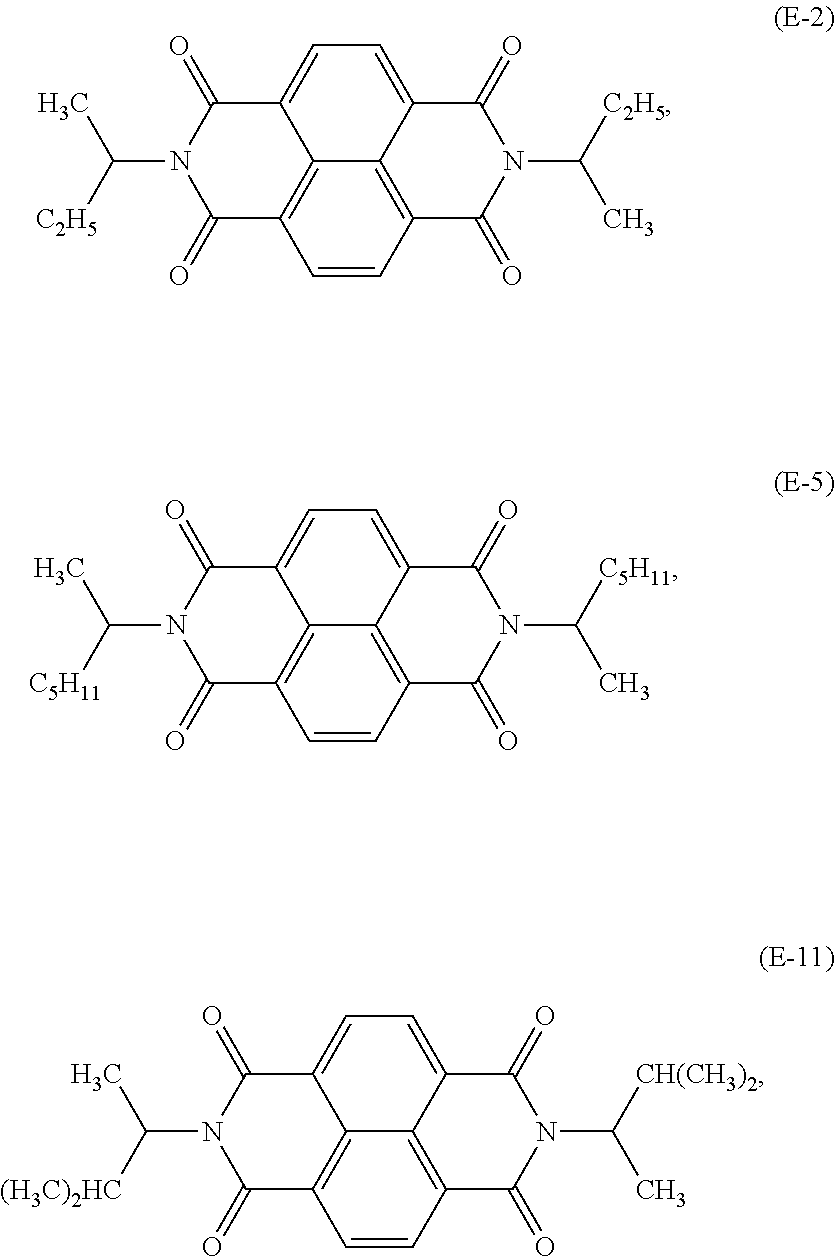
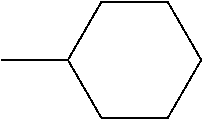






View All Diagrams
| United States Patent | 10,962,893 |
| Suzuki , et al. | March 30, 2021 |
Photosensitive body for electrophotography, method for producing same and electrophotographic apparatus
Abstract
An electrophotographic photoreceptor includes a conductive substrate; and a photosensitive layer arranged on the conductive substrate and containing, as a charge generating material, any one material selected from the group consisting of titanyl phthalocyanines, metal-free phthalocyanines, chlorogallium phthalocyanines and hydroxygallium phthalocyanines; and, as an electron transporting material, a naphthalene tetracarboxylic acid diimide compound represented by Formula (1) below, where R.sup.1 and R.sup.2 each represent a hydrogen atom, an alkyl group having 1 to 10 carbon atoms, an alkylene group, an alkoxy group, an alkyl ester group, a phenyl group optionally having a substituent, a naphthyl group optionally having a substituent, or a halogen element; and R.sup.1 and R.sup.2 are optionally the same or different: ##STR00001## The photoreceptor realizes a stable print density even in a low-temperature environment by suppressing a reduction in print density that is caused by potential fluctuation of the photoreceptor in the low-temperature environment.
| Inventors: | Suzuki; Shinjiro (Matsumoto, JP), Kitagawa; Seizo (Matsumoto, JP), Ogawa; Yuji (GuangDong, CN) | ||||||||||
|---|---|---|---|---|---|---|---|---|---|---|---|
| Applicant: |
|
||||||||||
| Assignee: | FUJI ELECTRIC CO., LTD.
(Kawasaki, JP) |
||||||||||
| Family ID: | 1000005454612 | ||||||||||
| Appl. No.: | 16/020,101 | ||||||||||
| Filed: | June 27, 2018 |
Prior Publication Data
| Document Identifier | Publication Date | |
|---|---|---|
| US 20180307147 A1 | Oct 25, 2018 | |
Related U.S. Patent Documents
| Application Number | Filing Date | Patent Number | Issue Date | ||
|---|---|---|---|---|---|
| PCT/JP2017/018100 | May 12, 2017 | ||||
Foreign Application Priority Data
| Jul 22, 2016 [JP] | JP2016-144853 | |||
| Current U.S. Class: | 1/1 |
| Current CPC Class: | G03G 5/0651 (20130101); G03G 5/047 (20130101); G03G 5/0614 (20130101); G03G 5/0525 (20130101); G03G 5/061446 (20200501); G03G 5/061473 (20200501); G03G 5/0696 (20130101); G03G 5/06147 (20200501); G03G 5/0564 (20130101) |
| Current International Class: | G03G 5/06 (20060101); G03G 5/05 (20060101); G03G 5/047 (20060101) |
References Cited [Referenced By]
U.S. Patent Documents
| 4882253 | November 1989 | Kato et al. |
| 5468583 | November 1995 | Gruenbaum |
| 6656650 | December 2003 | Lin et al. |
| 7163771 | January 2007 | Ioannidis |
| 7223507 | May 2007 | Ioannidis |
| 8236469 | August 2012 | Belknap |
| 8304153 | November 2012 | Shimada |
| 8380109 | February 2013 | Kurimoto |
| 2002/0076632 | June 2002 | Yanus |
| 2003/0211413 | November 2003 | Lin et al. |
| 2004/0049027 | March 2004 | Hamasaki |
| 2004/0096761 | May 2004 | Lin et al. |
| 2004/0197685 | October 2004 | Ioannidis et al. |
| 2006/0014097 | January 2006 | Perry |
| 2006/0292468 | December 2006 | Yokota |
| 2009/0068577 | March 2009 | Ohta et al. |
| 2011/0091799 | April 2011 | Nakamura et al. |
| 2012/0003574 | January 2012 | Kitagawa et al. |
| 2014/0199619 | July 2014 | Kitagawa |
| 101386621 | Mar 2009 | CN | |||
| H03-256050 | Nov 1991 | JP | |||
| H04-241359 | Aug 1992 | JP | |||
| H04-242259 | Aug 1992 | JP | |||
| H05-012702 | Feb 1993 | JP | |||
| H05-045915 | Feb 1993 | JP | |||
| H05-030262 | May 1993 | JP | |||
| H05-047822 | Jul 1993 | JP | |||
| H07-160017 | Jun 1995 | JP | |||
| 10017531 | Jan 1998 | JP | |||
| 2000-019748 | Jan 2000 | JP | |||
| 2000019748 | Jan 2000 | JP | |||
| 2000214609 | Aug 2000 | JP | |||
| 2001-228637 | Aug 2001 | JP | |||
| 2004-038167 | Feb 2004 | JP | |||
| 2004-170984 | Jun 2004 | JP | |||
| 2004-269441 | Sep 2004 | JP | |||
| 2004-310089 | Nov 2004 | JP | |||
| 2005141064 | Jun 2005 | JP | |||
| 2005-208617 | Aug 2005 | JP | |||
| 2005-208618 | Aug 2005 | JP | |||
| 2007-011356 | Jan 2007 | JP | |||
| 2007108652 | Apr 2007 | JP | |||
| 2007232984 | Sep 2007 | JP | |||
| 2007-322576 | Dec 2007 | JP | |||
| 2008310291 | Dec 2008 | JP | |||
| 2009-222894 | Oct 2009 | JP | |||
| 2009-288569 | Dec 2009 | JP | |||
| 2009-292802 | Dec 2009 | JP | |||
| 2010-181585 | Aug 2010 | JP | |||
| 2012-137667 | Jul 2012 | JP | |||
| 2014-146001 | Aug 2014 | JP | |||
| 2014178650 | Sep 2014 | JP | |||
| 2015-094839 | May 2015 | JP | |||
| WO-2009/104571 | Aug 2009 | WO | |||
| WO-2013/021430 | Feb 2013 | WO | |||
Other References
|
English language machine translation of JP 2008-310291 (Dec. 2008). cited by examiner . Borsenberger, P.M.; Gruenbaum, W.T.; Magin, E.H.; Visser, S.A. Electron Trapping in Acceptor Doped Polymers. Phys. Stat. Sol. (a) 166, 835-842 (Year: 1998). cited by examiner . English language machine translation of JP 2000-019748 (Jan. 2000). cited by examiner . English language machine translation of JP 2000-214609 (Aug. 2000). cited by examiner . English language machine translation of JP 2005-141064. (Year: 2005). cited by examiner . English language machine translation of JP 2007-108652. (Year: 2007). cited by examiner . English language machine translation of JP 10-017531 (Year: 1998). cited by examiner . English language machine translation of JP 2007-232984. (Year: 2007). cited by examiner. |
Primary Examiner: Rodee; Christopher D
Attorney, Agent or Firm: Rabin & Berdo, P.C.
Parent Case Text
CROSS-REFERENCE TO RELATED APPLICATIONS
This non-provisional application is a continuation of International Application No. PCT/JP2017/018100 filed on May 12, 2017, which claims priority from Japanese Patent Application No. 2016-144853 filed on Jul. 22, 2016, the entire contents of both of which are incorporated herein by reference.
Claims
What is claimed is:
1. An electrophotographic photoreceptor, comprising: a conductive substrate; and a photosensitive layer that is provided on the conductive substrate, that is a laminate-type positively-chargeable photosensitive layer in which a charge transport layer and a charge generation layer are sequentially laminated on the conductive substrate in that order, wherein (a) the charge transport layer consists essentially of: a hole transporting material that comprises a compound represented by Formulae (2) to (4) below; and a resin binder that comprises a polycarbonate resin having a repeating unit represented by Formula (6) below; and (b) the charge generation layer contains: a charge generating material selected from the group consisting of titanyl phthalocyanines, metal-free phthalocyanines, chlorogallium phthalocyanines and hydroxygallium phthalocyanines; a hole transporting material that comprises a compound represented by Formulae (2) to (4) below; an electron transporting material that is any one compound represented by Formulae (E-2), (E-5) and (E-11) below; and a resin binder that comprises a polycarbonate resin having a repeating unit represented by Formula (6) below: ##STR00199## where Ra represents a methyl group in Formula 2; and Ra represents a hydrogen atom, an optionally branched alkyl group having 1 to 6 carbon atoms, an alkoxy group having 1 to 6 carbon atoms, a phenyl group optionally having a substituent, or a styryl group optionally having a substituent in Formula (3) and Formula (4); where Rd represents a hydrogen atom, an optionally branched alkyl group having 1 to 6 carbon atoms, an alkoxy group having 1 to 6 carbon atoms, a phenyl group optionally having a substituent, or a styryl group optionally having a substituent; where Rb represents a methyl group in Formula (2); and Rb represents a hydrogen atom, an optionally branched alkyl group having 1 to 6 carbon atoms, or an alkoxy group having 1 to 6 carbon atoms in Formula (3); where Rc represents a hydrogen atom, an optionally branched alkyl group having 1 to 6 carbon atoms, or an alkoxy group having 1 to 6 carbon atoms; where Rf represents a hydrogen atom, an optionally branched alkyl group having 1 to 6 carbon atoms, an alkoxy group having 1 to 3 carbon atoms, a phenyl group in Formula (4) but not in Formula (3), which phenyl group in Formula (4) optionally has a substituent, a styryl group optionally having a substituent, or a 4-phenyl butadiene group optionally having a substituent; and where x and y each represent an integer of 1 to 5 and are different in Formula (2); x and y each represent an integer of 0 to 5 in Formula (3); x represents an integer of 0 to 5 in Formula (4); p represents an integer of 0 to 5; z represents an integer of 0 to 4; l represents an integer of 0 to 2; and m represents an integer of 2 to 4; ##STR00200## where R.sup.3 and R.sup.4 each represent a hydrogen atom, a methyl group, or an ethyl group; where X represents an oxygen atom, a sulfur atom, or --CR.sup.5R.sup.6; and where R.sup.5 and R.sup.6 each represent a hydrogen atom, an alkyl group having 1 to 4 carbon atoms, or a phenyl group optionally having a substituent, or R.sup.5 and R.sup.6 are optionally cyclically bound to form a cycloalkyl group having 4 to 6 carbon atoms, the cycloalkyl group optionally has a substituent; and R.sup.5 and R.sup.6 are optionally the same or different; and ##STR00201##
2. A method of producing an electrophotographic photoreceptor according to claim 1, the method comprising: providing the conductive substrate; and forming a photosensitive layer that is a laminate-type positively-chargeable photosensitive layer on the conductive substrate by: providing a coating solution for coating the charge transport layer; coating the coating solution for coating the charge transport layer onto the conductive substrate to provide the charge transport layer; providing a coating solution for coating the charge generating layer; and coating the coating solution for coating the charge generation layer onto the charge transport layer to provide the charge generation layer.
3. An electrophotographic apparatus equipped with the electrophotographic photoreceptor according to claim 1.
4. The electrophotographic photoreceptor according to claim 1, wherein the charge generating material of the charge generation layer comprises a titanyl phthalocyanine.
Description
BACKGROUND OF THE INVENTION
1. Field of the Invention
The present invention relates to: an electrophotographic photoreceptor (hereinafter, also simply referred to as "photoreceptor") used in electrophotographic printers, copying machines, fax machines and the like; a method of producing the same; and an electrophotographic apparatus. More particularly, the present invention relates to: an electrophotographic photoreceptor which is capable of stably realizing excellent electrical characteristics by containing a specific electron transporting material in a photosensitive layer; a method of producing the same; and an electrophotographic apparatus.
2. Background of the Related Art
Electrophotographic photoreceptors have a basic structure in which a photosensitive layer having a photoconductive function is disposed on a conductive substrate. In recent years, organic electrophotographic photoreceptors using an organic compound as a functional component for generation and transport of charge have been not only actively studied and developed but also increasingly applied to copying machines, printers and the like because of their advantages such as material diversity, high productivity, and safety.
Generally, photoreceptors are required to have a function of retaining a surface charge in dark places and a function of generating a charge upon receiving light, as well as a function of transporting the thus generated charge. Such photoreceptors include: so-called single layer-type photoreceptors that comprise a single photosensitive layer having a combination of these functions; and so-called laminate-type (function-separated) photoreceptors that comprise a photosensitive layer in which functionally separated layers, such as a charge generation layer mainly having a function of generating a charge upon receiving light and a charge transport layer having both functions of retaining a surface charge in dark places and transporting the charge generated by the charge generation layer upon receiving light, are laminated.
Among these photoreceptors, positively-chargeable organic photoreceptors, in which charging characteristics of a photoreceptor surface is used for a positive charge, have layer structures that are roughly classified into four types as described below, and a variety of such layer structures have been previously proposed. The first structure is a two-layer structure of a function-separated photoreceptor in which a charge transport layer and a charge generation layer are sequentially laminated on a conductive substrate (see, for example, Patent Document 1, Japanese Patent Publication No. H05-30262, and Patent Document 2, Japanese Unexamined Patent Application Publication No. H04-242259). The second structure is a three-layer structure of a function-separated photoreceptor in which a surface protective layer is laminated on the above-described two-layer structure (see, for example, Patent Document 3, Japanese Patent Publication No. H05-47822; Patent Document 4, Japanese Patent Publication No. H05-12702; and Patent Document 5, Japanese Unexamined Patent Application Publication No. H04-241359). The third structure is a two-layer structure of a function-separated photoreceptor in which a charge generation layer and a charge (electron) transport layer are sequentially laminated in the reverse order to that of the first structure (see, for example, Patent Document 6, Japanese Unexamined Patent Application Publication No. H05-45915, and Patent Document 7, Japanese Unexamined Patent Application Publication No. H07-160017). The fourth structure is of a single layer-type photoreceptor in which a charge generating material, a hole transporting material and an electron transporting material are dispersed in the same single layer (see, for example, Patent Document 6 and Patent Document 8, Japanese Unexamined Patent Application Publication No. H03-256050). It is noted here that the above-described 4-type classification does not take into account the presence or absence of an undercoat layer.
Thereamong, single layer-type photoreceptors having the fourth structure have been studied in detail and generally and widely put into practical use. A major reason for this is believed to be because single layer-type photoreceptors adopt a structure in which the electron transport function of an electron transporting material, whose transport capacity is inferior to the hole transport function of a hole transporting material, is complemented by the hole transporting material. Such single layer-type photoreceptors are dispersed-type photoreceptors, and carriers are thus generated inside the film as well; however, since the number of generated carriers increases toward the vicinity of the photosensitive layer surface and this makes the electron transport distance shorter than the hole transport distance, it is believed that the electron transport capacity does not have to be as high as the hole transport capacity. This allows single layer-type photoreceptors having the fourth structure to realize practically sufficient environmental stability and fatigue characteristics as compared to other three types.
In single layer-type photoreceptors, since a single layer is imparted with both functions of carrier generation and carrier transport, there are advantages that the coating process can be simplified and high yield rate and process capacity are likely to be attained; however, there are also problems in that the content of a binder resin is reduced and the durability is consequently impaired when both a hole transporting material and an electron transporting material are incorporated in large amounts into a single layer in order to increase the sensitivity and the speed. Therefore, single layer-type photoreceptors have limitations in terms of achieving high performance for both in sensitivity and speed and in durability.
Accordingly, in conventional single layer-type positively-chargeable organic photoreceptors, it is difficult to implement measures for concurrently achieving such sensitivity, durability and contamination resistance that conform to the recent reduction in size and increase in speed of devices as well as increase in resolution and colorization. Therefore, novel laminate-type positively-chargeable photoreceptors in which a charge transport layer and a charge generation layer are sequentially laminated have been proposed as well (see, for example, Patent Document 9, Japanese Unexamined Patent Application Publication No. 2009-288569, and Patent Document 10, WO 2009/104571). The layer structure of these laminate-type positively-chargeable photoreceptors is similar to the above-described layer structure of the first type; however, in this layer structure, the resin ratio in the charge generation layer can be set to be higher than that in a conventional single layer-type photoreceptor and an increase in both sensitivity and durability can thus be easily achieved since not only the amount of a charge generating material contained in the charge generation layer can be reduced while incorporating an electron transporting material and the thickness of the charge generation layer can be increased to be close to that of the charge transport layer therebelow, but also the amount of a hole transporting material to be added in the charge generation layer can be reduced.
Moreover, in association with the development and increase in usage of color printers, the printing speed has been increased and the printer size and the number of printer components have been further reduced, and the printers are demanded to cope with a variety of use environments. Under such circumstances, there is a pressing need for a photoreceptor that exhibits little variation in image and electrical characteristics caused by repeated use and fluctuations in the use environment (room temperature and ambient conditions), and conventional technologies can no longer simultaneously and adequately satisfy these demands. Particularly, it is demanded to resolve the problem of a reduction in print density that is caused by potential fluctuation of a photoreceptor in a low-temperature environment.
As a concrete improvement method, for example, Patent Document 11, Japanese Unexamined Patent Application Publication No. 2015-94839, describes that an electrophotographic photoreceptor that is highly sensitive and extremely stable against environmental variations was obtained by using a butanediol-added titanyl phthalocyanine as a charge generating material in combination with a naphthalene tetracarboxylic acid diimide compound as a charge transporting material.
An object of the present invention is to provide: an electrophotographic photoreceptor with which a stable print density can be realized even in a low-temperature environment by suppressing the above-described reduction in print density that is caused by potential fluctuation of the photoreceptor in a low-temperature environment; a method of producing the same; and an electrophotographic apparatus.
SUMMARY OF THE INVENTION
The present inventors intensively studied to discover that, by incorporating, into a photosensitive layer, a prescribed phthalocyanine compound as a charge generating material along with a prescribed naphthalene tetracarboxylic acid diimide compound as an electron transporting material, an electrophotographic photoreceptor which can yield a stable print density even in a low-temperature environment can be provided.
That is, a first embodiment of the present invention is an electrophotographic photoreceptor comprising: a conductive substrate; and a photosensitive layer arranged on the conductive substrate, wherein the photosensitive layer comprises: as a charge generating material, any one material selected from the group consisting of titanyl phthalocyanines, metal-free phthalocyanines, chlorogallium phthalocyanines and hydroxygallium phthalocyanines; and, as an electron transporting material, a naphthalene tetracarboxylic acid diimide compound represented by the following Formula (1):
##STR00002## where R.sup.1 and R.sup.2 each represent a hydrogen atom, an alkyl group having 1 to 10 carbon atoms, an alkylene group, an alkoxy group, an alkyl ester group, a phenyl group optionally having a substituent, a naphthyl group optionally having a substituent, or a halogen element; and R.sup.1 and R.sup.2 are optionally the same or different.
It is preferred that the photosensitive layer be a laminate-type positively-chargeable photosensitive layer in which a charge transport layer, which contains at least a hole transporting material and a resin binder, and a charge generation layer, which contains at least the charge generating material, a hole transporting material, the electron transporting material and a resin binder, are sequentially laminated. In this case, it is preferred that the charge transport layer contain: any one compound represented by Formulae (2) to (5) below as the above-described hole transporting material; and a polycarbonate resin having a repeating unit represented by Formula (6) below as the above-described resin binder, and that the charge generation layer contain: a titanyl phthalocyanine as the above-described charge generating material; any one compound represented by the Formulae (2) to (5) as the above-described hole transporting material; any one compound represented by (E-2), (E-5) and (E-11) below as the above-described electron transporting material; and a polycarbonate resin having a repeating unit represented by Formula (6) below as the above-described resin binder:
##STR00003## where Ra and Rd each represent a hydrogen atom, an optionally branched alkyl group having 1 to 6 carbon atoms, an alkoxy group having 1 to 6 carbon atoms, a phenyl group optionally having a substituent, or a styryl group optionally having a substituent; Rb and Rc each represent a hydrogen atom, an optionally branched alkyl group having 1 to 6 carbon atoms, or an alkoxy group having 1 to 6 carbon atoms; Re and Rf each represent a hydrogen atom, an optionally branched alkyl group having 1 to 6 carbon atoms, an alkoxy group having 1 to 3 carbon atoms, a phenyl group optionally having a substituent, a styryl group optionally having a substituent, or a 4-phenyl butadiene group optionally having a substituent; x, y and p each represent an integer of 0 to 5; z represents an integer of 0 to 4; l represents an integer of 0 to 2; and m represents an integer of 1 to 4;
##STR00004## where R.sup.3 and R.sup.4 each represent a hydrogen atom, a methyl group, or an ethyl group; X represents an oxygen atom, a sulfur atom, or --CR.sup.5R.sup.6; R.sup.5 and R.sup.6 each represent a hydrogen atom, an alkyl group having 1 to 4 carbon atoms, or a phenyl group optionally having a substituent, or R.sup.5 and R.sup.6 are optionally cyclically bound to form a cycloalkyl group having 4 to 6 carbon atoms, which optionally has a substituent; and R.sup.5 and R.sup.6 are optionally the same or different; and
##STR00005##
It is also preferred that the photosensitive layer be a single layer-type positively-chargeable photosensitive layer which contains, in a single layer, a charge generating material, a hole transporting material, an electron transporting material, and a resin binder. In this case, it is preferred that the photosensitive layer contain: a metal-free phthalocyanine as the above-described charge generating material; any one compound represented by the Formulae (2) to (5) above as the above-described hole transporting material; any one compound represented by the Formulae (E-2), (E-5) and (E-11) above as the above-described electron transporting material; and a polycarbonate resin having a repeating unit represented by the Formula (6) above as the above-described resin binder.
Further, the method of producing an electrophotographic photoreceptor according to a second embodiment of the present invention is a method of producing an electrophotographic photoreceptor comprising a photosensitive layer on a conductive substrate, the method comprising: a step of forming the photosensitive layer using any one material selected from the group consisting of titanyl phthalocyanines, metal-free phthalocyanines, chlorogallium phthalocyanines and hydroxygallium phthalocyanines as a charge generating material along with a naphthalene tetracarboxylic acid diimide compound represented by the Formula (1) as an electron transporting material.
Still further, the electrophotographic apparatus according to a third embodiment of the present invention is equipped with the above-described electrophotographic photoreceptor.
According to the above-described embodiments of the present invention, an electrophotographic photoreceptor with which a stable print density can be realized even in a low-temperature environment by suppressing a reduction in print density that is caused by potential fluctuation of the photoreceptor in a low-temperature environment; a method of producing the same; and an electrophotographic apparatus can be provided.
BRIEF DESCRIPTION OF THE DRAWINGS
FIG. 1 is a schematic cross-sectional view showing one example of the electrophotographic photoreceptor of the present invention;
FIG. 2 is a schematic cross-sectional view showing another example of the electrophotographic photoreceptor of the present invention; and
FIG. 3 is a schematic structural view showing one example of the electrophotographic apparatus of the present invention.
DETAILED DESCRIPTION OF THE INVENTION
Concrete embodiments of the electrophotographic photoreceptor of the present invention will now be described in detail referring to the drawings. The present invention, however, is not restricted to the following descriptions by any means.
FIG. 1 is a schematic cross-sectional view showing one example of the electrophotographic photoreceptor of the present invention, which is a positively-chargeable single layer-type electrophotographic photoreceptor. As illustrated, in the positively-chargeable single layer-type photoreceptor, an undercoat layer 2 and a single layer-type photosensitive layer 3, which has both a charge generation function and a charge transport function, are sequentially laminated on a conductive substrate 1.
Further, FIG. 2 is a schematic cross-sectional view showing another example of the electrophotographic photoreceptor of the present invention, which is a positively-chargeable laminate-type electrophotographic photoreceptor. As illustrated, in the positively-chargeable laminate-type photoreceptor, a laminate-type positively-chargeable photosensitive layer 6, in which a charge transport layer 4 having a charge transport function and a charge generation layer 5 having a charge generation function are sequentially laminated, is arranged on the surface of the conductive substrate 1 having a cylindrical form with the undercoat layer 2 in between. It is noted here that the undercoat layer 2 may be arranged as required.
In the photoreceptor according to one embodiment of the present invention, the photosensitive layer comprises: as a charge generating material, any one material selected from the group consisting of titanyl phthalocyanines, metal-free phthalocyanines, chlorogallium phthalocyanines and hydroxygallium phthalocyanines; and, as an electron transporting material, a naphthalene tetracarboxylic acid diimide compound represented by the above-described Formula (1). The use of a combination of the specific charge generating material and the specific electron transporting material in the photosensitive layer enables to suppress potential fluctuation of the photoreceptor in a low-temperature environment and to inhibit a reduction in print density that is caused by the potential fluctuation, whereby a photoreceptor having a stable print density can be realized.
As a titanyl phthalocyanine, for example, .alpha.-type titanyl phthalocyanine, .beta.-type titanyl phthalocyanine, Y-type titanyl phthalocyanine, amorphous titanyl phthalocyanine, or a titanyl phthalocyanine which is described in Japanese Unexamined Patent Application Publication No. H8-209023, U.S. Pat. No. 5,736,282 or 5,874,570 and has a maximum peak at a Bragg angle (2.theta.) of 9.6.degree. in CuK.alpha.:X-ray diffraction spectrum can be used. As a metal-free phthalocyanine, for example, an X-type metal-free phthalocyanine or a T-type metal-free phthalocyanine can be used.
Specific examples of the naphthalene tetracarboxylic acid diimide compound that is represented by the Formula (1) and used as an electron transporting material include compounds represented by Formulae (E-1) to (E-176) below. Thereamong, from the standpoint of the solubility in the preparation of a coating solution, structures in which either or both of R.sup.1 and R.sup.2 is/are an alkyl group(s) are preferred.
TABLE-US-00001 TABLE 1 Compound R.sup.1 R.sup.2 E-1 --CH.sub.3 --CH.sub.3 E-2 --CH.sub.3 --C.sub.2H.sub.5 E-3 --CH.sub.3 --C.sub.3H.sub.7 E-4 --CH.sub.3 --C.sub.4H.sub.9 E-5 --CH.sub.3 --C.sub.5H.sub.11 E-6 --CH.sub.3 --C.sub.6H.sub.13 E-7 --CH.sub.3 --C.sub.7H.sub.15 E-8 --CH.sub.3 --C.sub.8H.sub.17 E-9 --CH.sub.3 --C.sub.9H.sub.19 E-10 --CH.sub.3 ##STR00006## E-11 --CH.sub.3 --CH(CH.sub.3).sub.2 E-12 --CH.sub.3 --CH.sub.2CH(CH.sub.3).sub.2 E-13 --CH.sub.3 --C.sub.2H.sub.4CH(CH.sub.3).sub.2 E-14 --H --H E-15 --H --CH.sub.3 E-16 --H --C.sub.2H.sub.5 E-17 --H --C.sub.3H.sub.7 E-18 --H --C.sub.4H.sub.9 E-19 --H --C.sub.5H.sub.11 E-20 --H --C.sub.6H.sub.13 E-21 --H --C.sub.7H.sub.15 E-22 --H --C.sub.8H.sub.17 E-23 --H --C.sub.9H.sub.19 E-24 --H ##STR00007##
TABLE-US-00002 TABLE 2 Compound R.sup.1 R.sup.2 E-25 --C.sub.2H.sub.5 --C.sub.2H.sub.5 E-26 --C.sub.2H.sub.5 --C.sub.3H.sub.7 E-27 --C.sub.2H.sub.5 --C.sub.4H.sub.9 E-28 --C.sub.2H.sub.5 --C.sub.5H.sub.11 E-29 --C.sub.2H.sub.5 --C.sub.6H.sub.13 E-30 --C.sub.2H.sub.5 --C.sub.7H.sub.15 E-31 --C.sub.2H.sub.5 --C.sub.8H.sub.17 E-32 --C.sub.2H.sub.5 --C.sub.9H.sub.19 E-33 --C.sub.2H.sub.5 ##STR00008## E-34 --C.sub.3H.sub.7 --C.sub.3H.sub.7 E-35 --C.sub.3H.sub.7 --C.sub.4H.sub.9 E-36 --C.sub.3H.sub.7 --C.sub.5H.sub.11 E-37 --C.sub.3H.sub.7 --C.sub.6H.sub.13 E-38 --C.sub.3H.sub.7 --C.sub.7H.sub.15 E-39 --C.sub.3H.sub.7 --C.sub.8H.sub.17 E-40 --C.sub.3H.sub.7 --C.sub.9H.sub.19 E-41 --C.sub.3H.sub.7 ##STR00009## E-42 --C.sub.4H.sub.9 --C.sub.4H.sub.9 E-43 --C.sub.4H.sub.9 --C.sub.5H.sub.11 E-44 --C.sub.4H.sub.9 --C.sub.6H.sub.13 E-45 --C.sub.4H.sub.9 --C.sub.7H.sub.15 E-46 --C.sub.4H.sub.9 --C.sub.8H.sub.17 E-47 --C.sub.4H.sub.9 --C.sub.9H.sub.19 E-48 --C.sub.4H.sub.9 ##STR00010##
TABLE-US-00003 TABLE 3 Compound R.sup.1 R.sup.2 E-49 --H ##STR00011## E-50 --H ##STR00012## E-51 --H ##STR00013## E-52 --H ##STR00014## E-53 --H ##STR00015## E-54 --H ##STR00016## E-55 --H ##STR00017## E-56 --H ##STR00018## E-57 --H ##STR00019## E-58 --H ##STR00020## E-59 --H ##STR00021## E-60 --H ##STR00022## E-61 --H ##STR00023## E-62 --H ##STR00024## E-63 --CH.sub.3 ##STR00025##
TABLE-US-00004 TABLE 4 Compound R.sup.1 R.sup.2 E-64 --CH.sub.3 ##STR00026## E-65 --CH.sub.3 ##STR00027## E-66 --CH.sub.3 ##STR00028## E-67 --CH.sub.3 ##STR00029## E-68 --CH.sub.3 ##STR00030## E-69 --CH.sub.3 ##STR00031## E-70 --CH.sub.3 ##STR00032## E-71 --CH.sub.3 ##STR00033## E-72 --CH.sub.3 ##STR00034## E-73 --CH.sub.3 ##STR00035## E-74 --CH.sub.3 ##STR00036## E-75 --CH.sub.3 ##STR00037## E-76 --CH.sub.3 ##STR00038##
TABLE-US-00005 TABLE 5 Compound R.sup.1 R.sup.2 E-77 --C.sub.2H.sub.5 ##STR00039## E-78 --C.sub.2H.sub.5 ##STR00040## E-79 --C.sub.2H.sub.5 ##STR00041## E-80 --C.sub.2H.sub.5 ##STR00042## E-81 --C.sub.2H.sub.5 ##STR00043## E-82 --C.sub.2H.sub.5 ##STR00044## E-83 --C.sub.2H.sub.5 ##STR00045## E-84 --C.sub.2H.sub.5 ##STR00046## E-85 --C.sub.2H.sub.5 ##STR00047## E-86 --C.sub.2H.sub.5 ##STR00048## E-87 --C.sub.2H.sub.5 ##STR00049## E-88 --C.sub.2H.sub.5 ##STR00050## E-89 --C.sub.2H.sub.5 ##STR00051## E-90 --C.sub.2H.sub.5 ##STR00052##
TABLE-US-00006 TABLE 6 Compound R.sup.1 R.sup.2 E-91 --C.sub.3H.sub.7 ##STR00053## E-92 --C.sub.3H.sub.7 ##STR00054## E-93 --C.sub.3H.sub.7 ##STR00055## E-94 --C.sub.3H.sub.7 ##STR00056## E-95 --C.sub.3H.sub.7 ##STR00057## E-96 --C.sub.3H.sub.7 ##STR00058## E-97 --C.sub.3H.sub.7 ##STR00059## E-98 --C.sub.3H.sub.7 ##STR00060## E-99 --C.sub.3H.sub.7 ##STR00061## E-100 --C.sub.3H.sub.7 ##STR00062## E-101 --C.sub.3H.sub.7 ##STR00063## E-102 --C.sub.3H.sub.7 ##STR00064## E-103 --C.sub.3H.sub.7 ##STR00065## E-104 --C.sub.3H.sub.7 ##STR00066##
TABLE-US-00007 TABLE 7 Compound R.sup.1 R.sup.2 E-105 --C.sub.4H.sub.9 ##STR00067## E-106 --C.sub.4H.sub.9 ##STR00068## E-107 --C.sub.4H.sub.9 ##STR00069## E-108 --C.sub.4H.sub.9 ##STR00070## E-109 --C.sub.4H.sub.9 ##STR00071## E-110 --C.sub.4H.sub.9 ##STR00072## E-111 --C.sub.4H.sub.9 ##STR00073## E-112 --C.sub.4H.sub.9 ##STR00074## E-113 --C.sub.4H.sub.9 ##STR00075## E-114 --C.sub.4H.sub.9 ##STR00076## E-115 --C.sub.4H.sub.9 ##STR00077## E-116 --C.sub.4H.sub.9 ##STR00078## E-117 --C.sub.4H.sub.9 ##STR00079## E-118 --C.sub.4H.sub.9 ##STR00080##
TABLE-US-00008 TABLE 8 Compound R.sup.1 R.sup.2 E-119 --C.sub.5H.sub.11 ##STR00081## E-120 --C.sub.5H.sub.11 ##STR00082## E-121 --C.sub.5H.sub.11 ##STR00083## E-122 --C.sub.5H.sub.11 ##STR00084## E-123 --C.sub.5H.sub.11 ##STR00085## E-124 --C.sub.5H.sub.11 ##STR00086## E-125 --C.sub.5H.sub.11 ##STR00087## E-126 --C.sub.5H.sub.11 ##STR00088## E-127 --C.sub.5H.sub.11 ##STR00089## E-128 --C.sub.5H.sub.11 ##STR00090## E-129 --C.sub.5H.sub.11 ##STR00091## E-130 --C.sub.5H.sub.11 ##STR00092## E-131 --C.sub.5H.sub.11 ##STR00093## E-132 --C.sub.5H.sub.11 ##STR00094##
TABLE-US-00009 TABLE 9 Compound R.sup.1 R.sup.2 E-133 ##STR00095## ##STR00096## E-134 ##STR00097## ##STR00098## E-135 ##STR00099## ##STR00100## E-136 ##STR00101## ##STR00102## E-137 ##STR00103## ##STR00104## E-138 ##STR00105## ##STR00106## E-139 ##STR00107## ##STR00108## E-140 ##STR00109## ##STR00110## E-141 ##STR00111## ##STR00112## E-142 ##STR00113## ##STR00114## E-143 ##STR00115## ##STR00116## E-144 ##STR00117## ##STR00118## E-145 ##STR00119## ##STR00120## E-146 ##STR00121## ##STR00122##
TABLE-US-00010 TABLE 10 Compound R.sup.1 R.sup.2 E-147 ##STR00123## ##STR00124## E-148 ##STR00125## ##STR00126## E-149 ##STR00127## ##STR00128## E-150 ##STR00129## ##STR00130## E-151 ##STR00131## ##STR00132## E-152 ##STR00133## ##STR00134## E-153 ##STR00135## ##STR00136## E-154 ##STR00137## ##STR00138## E-155 ##STR00139## ##STR00140## E-156 ##STR00141## ##STR00142## E-157 ##STR00143## ##STR00144## E-158 ##STR00145## ##STR00146## E-159 ##STR00147## ##STR00148##
TABLE-US-00011 TABLE 11 Compound R.sup.1 R.sup.2 E-160 ##STR00149## ##STR00150## E-161 ##STR00151## ##STR00152## E-162 ##STR00153## ##STR00154## E-163 ##STR00155## ##STR00156## E-164 ##STR00157## ##STR00158## E-165 ##STR00159## ##STR00160## E-166 ##STR00161## ##STR00162## E-167 ##STR00163## ##STR00164## E-168 ##STR00165## ##STR00166## E-169 ##STR00167## ##STR00168## E-170 ##STR00169## ##STR00170## E-171 ##STR00171## ##STR00172## E-172 ##STR00173## ##STR00174##
TABLE-US-00012 TABLE 12 Compound R.sup.1 R.sup.2 E-173 ##STR00175## ##STR00176## E-174 ##STR00177## ##STR00178## E-175 ##STR00179## ##STR00180## E-176 ##STR00181## ##STR00182##
The conductive substrate 1 not only functions as an electrode of the photoreceptor but also serves as a support of the layers constituting the photoreceptor, and the conductive substrate 1 may take any form, such as a cylindrical form, a plate form or a film form. As the material of the conductive substrate 1, for example, a metal (e.g., aluminum, stainless steel, or nickel), or a material such as glass or resin, having a surface subjected to a conductive treatment, can be used.
The undercoat layer 2 is composed of a layer containing resin as a main component, or a metal oxide film of alumite or the like. The undercoat layer 2 is arranged as required for the purposes of, for example, controlling the injectability of a charge from the conductive substrate 1 into the photosensitive layer, covering surface defects of the conductive substrate, and improving the adhesion between the photosensitive layer and the conductive substrate 1. Examples of a resin material used in the undercoat layer 2 include insulating polymers, such as casein, polyvinyl alcohol, polyamide, melamine and cellulose; and conductive polymers, such as polythiophene, polypyrrole and polyaniline, and these resins may be used individually, or as a mixture of an appropriate combination. Further, a metal oxide such as titanium dioxide or zinc oxide may be incorporated into these resins.
Positively-Chargeable Single Layer-Type Photoreceptor
In the case of a positively-chargeable single layer-type photoreceptor, the single layer-type photosensitive layer 3 functions as a photosensitive layer containing the above-described specific charge generating material and electron transporting material. In the positively-chargeable single layer-type photoreceptor, the single layer-type photosensitive layer 3 is a single layer-type positively-chargeable photosensitive layer which mainly contains, in a single layer, a charge generating material, a hole transporting material, an electron transporting material (acceptor compound), and a resin binder.
The charge generating material of the single layer-type photosensitive layer 3 is required to contain any one material selected from the group consisting of titanyl phthalocyanines, metal-free phthalocyanines, chlorogallium phthalocyanines and hydroxygallium phthalocyanines, and one or more of other widely used charge generating materials may be used in combination as well. Examples of such other charge generating materials that can be used include phthalocyanine pigments other than the above, azo pigments, anthoanthrone pigments, perylene pigments, perinone pigments, polycyclic quinone pigments, squarylium pigments, thiapyrylium pigments, and quinacridone pigments. Particularly, disazo pigments and trisazo pigments can be used as azo pigments; N,N-bis(3,5-dimethylphenyl)-3,4:9,10-perylene-bis(carboximide) can be used as a perylene pigment; and copper phthalocyanines such as e-type copper phthalocyanine can be used as other phthalocyanine pigments. The charge generating material is effective as long as it is added in an amount of 0.1 to 20% by mass with respect to the total amount of the photosensitive layer, and a charge generating material other than titanyl phthalocyanines, metal-free phthalocyanines, chlorogallium phthalocyanines and hydroxygallium phthalocyanines can be added up to a range where the total amount of the charge generating materials is 20% by mass.
The electron transporting material of the single layer-type photosensitive layer 3 is required to contain a naphthalene tetracarboxylic acid diimide compound represented by the Formula (1), and one or more of other widely used electron transporting materials may be used in combination as well. Examples of such other electron transporting materials that can be used in combination include succinic anhydride, maleic anhydride, dibromosuccinic anhydride, phthalic anhydride, 3-nitrophthalic anhydride, 4-nitrophthalic anhydride, pyromellitic anhydride, pyromellitic acid, trimellitic acid, trimellitic anhydride, phthalimide, 4-nitrophthalimide, tetracyanoethylene, tetracyanoquinodimethane, chloranil, bromanil, o-nitrobenzoic acid, malononitrile, trinitrofluorenone, trinitrothioxanthone, dinitrobenzene, dinitroanthracene, dinitroacridine, nitroanthraquinone, dinitroanthraquinone, thiopyran compounds, quinone compounds, benzoquinone compounds, diphenoquinone compounds, naphthoquinone compounds, anthraquinone compounds, stilbenequinone compounds, and azoquinone compounds. The electron transporting material represented by the Formula (1) is effective as long as it is added in an amount of 1 to 50% by mass with respect to the total amount of the photosensitive layer, and an electron transporting material other than the one represented by the Formula (1) can be added up to a range where the total amount of the electron transporting materials is 50% by mass.
As the hole transporting material of the single layer-type photosensitive layer 3, for example, hydrazone compounds, pyrazoline compounds, pyrazolone compounds, oxadiazole compounds, oxazole compounds, arylamine compounds, benzidine compounds, stilbene compounds, styryl compounds, poly-N-vinylcarbazoles, and polysilanes can be used and, thereamong, an arylamine compound is preferred. These hole transporting materials may be used individually, or in a combination of two or more thereof. The hole transporting material is preferably one which exhibits an excellent ability to transport holes generated during irradiation with light and is suitable for combining with the charge generating material.
Examples of the suitable hole transporting material include those represented by the above-described Formulae (2) to (5). Further, as a specific example of the suitable hole transporting material, it is preferred that the hole transporting material contain any one arylamine compound represented by Formulae (H-1) to (H-30) below. From the standpoint of the stability of environmental characteristics, it is more preferred that the hole transporting material be an arylamine compound.
##STR00183## ##STR00184## ##STR00185## ##STR00186##
As the resin binder of the single layer-type photosensitive layer 3, for example, various polycarbonate resins other than the above-mentioned ones, such as bisphenol A-type polycarbonates, bisphenol Z-type polycarbonates, bisphenol A-type polycarbonate-biphenyl copolymers, and bisphenol Z-type polycarbonate-biphenyl copolymers; polyphenylene resins; polyester resins; polyvinyl acetal resins; polyvinyl butyral resins; polyvinyl alcohol resins; vinyl chloride resins; vinyl acetate resins; polyethylene resins; polypropylene resins; acrylic resins; polyurethane resins; epoxy resins; melamine resins; silicone resins; polyamide resins; polystyrene resins; polyacetal resins; polyarylate resins; polysulfone resins; methacrylate polymers; and copolymers of these resins can be used. Further, a mixture of resins of the same kind but with different molecular weights may be used as well.
Examples of a suitable resin binder include polycarbonate resins having a repeating unit represented by the Formula (6). Further, more specific examples of the suitable resin binder include polycarbonate resins having any one repeating unit represented by Formulae (B-1) to (B-10) below:
##STR00187##
The content of the charge generating material(s) in the single layer-type photosensitive layer 3 is preferably 0.1 to 20% by mass, more preferably 0.5 to 10% by mass, with respect to the solid content of the single layer-type photosensitive layer 3. The content of the hole transporting material(s) in the single layer-type photosensitive layer 3 is preferably 3 to 80% by mass, more preferably 5 to 60% by mass, with respect to the solid content of the single layer-type photosensitive layer 3. The content of the electron transport material(s) in the single layer-type photosensitive layer 3 is preferably 1 to 50% by mass, more preferably 5 to 40% by mass, with respect to the solid content of the single layer-type photosensitive layer 3. The content of the resin binder in the single layer-type photosensitive layer 3 is preferably 10 to 90% by mass, more preferably 20 to 80% by mass, with respect to the solid content of the single layer-type photosensitive layer 3.
In order to maintain a practically effective surface potential, the thickness of the single layer-type photosensitive layer 3 is in a range of preferably 3 to 100 .mu.m, more preferably 5 to 40 .mu.m.
Positively-Chargeable Laminate-Type Photoreceptor
In the case of a positively-chargeable laminate-type photoreceptor, the laminate-type positively-chargeable photosensitive layer 6 constituted by the charge transport layer 4 and the charge generation layer 5 functions as a photosensitive layer containing the above-described specific charge generating material and electron transporting material. In the positively-chargeable laminate-type photoreceptor, the charge transport layer 4 contains at least a hole transporting material and a resin binder, and the charge generation layer 5 contains at least a charge generating material, a hole transporting material, an electron transporting material, and a resin binder.
As the hole transporting material and the resin binder in the charge transport layer 4, the same materials as those exemplified above for the single layer-type photosensitive layer 3 can be used.
The content of the hole transporting material in the charge transport layer 4 is preferably 10 to 80% by mass, more preferably 20 to 70% by mass, with respect to the solid content of the charge transport layer 4. The content of the resin binder in the charge transport layer 4 is preferably 20 to 90% by mass, more preferably 30 to 80% by mass, with respect to the solid content of the charge transport layer 4.
In order to maintain a practically effective surface potential, the thickness of the charge transport layer 4 is in a range of preferably 3 to 50 .mu.m, more preferably 15 to 40 .mu.m.
As the hole transporting material and the resin binder in the charge generation layer 5, the same materials as those exemplified above for the single layer-type photosensitive layer 3 can be used. Further, as the charge generating material in the charge generation layer 5, in the same manner as in the single layer-type photosensitive layer 3, one or more of other widely used charge generating materials may be additionally used in combination with the above-described specific charge generating material. Moreover, as the electron transporting material in the charge generation layer 5, in the same manner as in the single layer-type photosensitive layer 3, one or more of other widely used electron transporting materials may be additionally used in combination with the above-described naphthalene tetracarboxylic acid diimide compound. The contents of the respective materials and the thickness of the charge generation layer 5 can also be the same as in the single layer-type photosensitive layer 3 of the single layer-type photoreceptor.
In one embodiment of the present invention, for the purposes of improving the leveling of the resulting film and imparting lubricity, a leveling agent such as a silicone oil or a fluorine-based oil may also be incorporated into the laminate-type or single layer-type photosensitive layer. In addition, for the purposes of adjusting the film hardness, reducing the frictional coefficient, imparting lubricity and the like, plural kinds of inorganic oxides may be incorporated. For example, fine particles of a metal oxide (e.g., silica, titanium oxide, zinc oxide, calcium oxide, alumina, or zirconium oxide), a metal sulfate (e.g., barium sulfate or calcium sulfate) or a metal nitride (e.g., silicon nitride or aluminum nitride), particles of a fluorine-based resin such as tetrafluoroethylene resin, or a fluorine-based comb-type graft polymer resin may be incorporated as well. Moreover, as required, other known additive(s) may also be incorporated within a range that does not markedly impair the electrophotographic properties.
Furthermore, in the photosensitive layer, deterioration inhibitors such as an antioxidant and a light stabilizer may also be incorporated for the purpose of improving the environmental resistance and the stability against damaging light. Examples of compounds used for such a purpose include chromanol derivatives such as tocopherol, as well as esterified compounds, polyarylalkane compounds, hydroquinone derivatives, etherified compounds, dietherified compounds, benzophenone derivatives, benzotriazole derivatives, thioether compounds, phenylenediamine derivatives, phosphonates, phosphites, phenolic compounds, hindered phenol compounds, linear amine compounds, cyclic amine compounds, and hindered amine compounds.
Method of Producing Photoreceptor
The photoreceptor according to one embodiment of the present invention can be produced by forming a photosensitive layer using any one material selected from the group consisting of titanyl phthalocyanines, metal-free phthalocyanines, chlorogallium phthalocyanines and hydroxygallium phthalocyanines as a charge generating material along with a naphthalene tetracarboxylic acid diimide compound represented by the Formula (1) above as an electron transporting material. The method of producing the photoreceptor may also include: a step of preparing a conductive substrate; and a step of preparing a coating solution in which the above-described specific charge generating material and electron transporting material as well as arbitrary hole transporting material and resin binder are dissolved or dispersed in a solvent.
Specifically, a single layer-type photoreceptor can be produced by a method comprising: a step of preparing a coating solution for the formation of a single layer-type photosensitive layer by dissolving or dispersing the above-described specific charge generating material and electron transporting material as well as arbitrary hole transporting material and resin binder in a solvent; and a step of forming a photosensitive layer by coating and then drying the thus prepared coating solution for the formation of a single layer-type photosensitive layer on the outer periphery of a conductive substrate via an undercoat layer as desired.
In the case of a laminate-type photoreceptor, first, a charge transport layer is formed by a method comprising: a step of preparing a coating solution for the formation of a charge transport layer by dissolving arbitrary hole transporting material and resin binder in a solvent; and a step of forming a charge transport layer by coating and then drying the thus prepared coating solution for the formation of a charge transport layer on the outer periphery of a conductive substrate via an undercoat layer as desired. Next, a charge generation layer is formed by a method comprising: a step of preparing a coating solution for the formation of a charge generation layer by dissolving or dispersing the above-described specific charge generating material and electron transporting material as well as arbitrary hole transporting material and resin binder in a solvent; and a step of forming a charge generation layer by coating and then drying the thus prepared coating solution for the formation of a charge generation layer on the above-formed charge transport layer. The laminate-type photoreceptor of one embodiment can be produced by such a production method. The above-described coating solutions can be applied to a variety of coating methods, such as dip coating and spray coating, and are not restricted to any one coating method. Further, the types of the solvents used for the preparation of the coating solutions, the coating conditions, the drying conditions and the like can be selected as appropriate in accordance with a conventional method and are not particularly restricted.
Electrophotographic Apparatus
The electrophotographic photoreceptor according to one embodiment of the present invention exerts desired effects when applied to various machine processes. Specifically, sufficient effects can be obtained not only in charging processes such as contact charging systems using a charging member (e.g., a roller or a brush) and non-contact charging systems using a corotron or a scorotron, but also in development processes such as non-contact development and contact development systems using, for example, a non-magnetic single-component, magnetic single-component or two-component developing agent.
The electrophotographic apparatus according to one embodiment of the present invention is equipped with the above-described electrophotographic photoreceptor. FIG. 3 is a schematic structural view showing one example of the structure of the electrophotographic apparatus according to the present invention. As illustrated, an electrophotographic apparatus 60 is equipped with a photoreceptor 7 according to one embodiment of the present invention, which comprises: a conductive substrate 1; and an undercoat layer 2 and a photosensitive layer 300, which cover the outer periphery of the conductive substrate 1. This electrophotographic apparatus 60 comprises: a charging member 21 which is arranged on the outer periphery of the photoreceptor 7 and has a roller shape in the example shown in the drawing; a high-voltage power source 22 which supplies applied voltage to the charging member 21; an image exposure member 23; a developer 24 which is equipped with a development roller 241; a paper-feeding member 25 which is equipped with a paper-feeding roller 251 and a paper feed guide 252; and a transfer charger (direct charging-type) 26. The electrophotographic apparatus 60 may further comprise a cleaning device 27 equipped with a cleaning blade 271, and a charge-removing member 28. The electrophotographic apparatus 60 according to one embodiment of the present invention can be configured as a color printer.
EXAMPLES
Concrete embodiments of the present invention will now be described in more detail by way of examples thereof.
The present invention, however, is not restricted to the following Examples as long as they do not deviate from the gist of the present invention.
Laminate-Type Photoreceptor
Example 1
As a conductive substrate, a 0.75 mm-thick aluminum tube machined to have a size of .phi.30 mm.times.252.6 mm (length) and a surface roughness (Rmax) of 0.2 .mu.m was used.
Charge Transport Layer
After dissolving 100 parts by mass of a compound represented by Formula (H-5) below as a hole transporting material and 100 parts by mass of a polycarbonate resin (viscosity-average molecular weight: 50,000) represented by Formula (BD-1) below as a resin binder in 800 parts by mass of tetrahydrofuran, 0.1 parts by mass of a silicone oil (KP-340, manufactured by Shin-Etsu Polymer Co., Ltd.) was added to prepare a coating solution. This coating solution was coated on the above-described conductive substrate, and the resultant was dried at 100.degree. C. for 30 minutes, whereby a 15 .mu.m-thick charge transport layer was formed.
##STR00188##
Charge Generation Layer
After dissolving 7.0 parts by mass of the compound represented by the Formula (H-5) as a hole transporting material, 3 parts by mass of a compound represented by Formula (E-2) below as an electron transporting material, 9.6 parts by mass of the polycarbonate resin having a repeating unit represented by the Formula (BD-1) as a resin binder, 0.04 parts by mass of a silicone oil (KF-54, manufactured by Shin-Etsu Polymer Co., Ltd.) and 0.1 parts by mass of dibutylhydroxytoluene (BHT) in 80 parts by mass of tetrahydrofuran, 0.3 parts by mass of a Y-type titanyl phthalocyanine (CG-1) was added thereto as a charge generating substance, and the resultant was subsequently subjected to a dispersion treatment using a sand grind mill to prepare a coating solution. This coating solution was coated on the above-formed charge transport layer, and the resultant was dried at 110.degree. C. for 30 minutes to form a 15 .mu.m-thick charge generation layer, whereby a 30 .mu.m-thick laminate-type electrophotographic photoreceptor was obtained.
##STR00189##
Example 2
An electrophotographic photoreceptor was produced in the same manner as in Example 1, except that the compound represented by the Formula (H-5) that was used in Example 1 was changed to the compound represented by the Formula (H-1).
Example 3
An electrophotographic photoreceptor was produced in the same manner as in Example 1, except that the compound represented by the Formula (H-5) that was used in Example 1 was changed to the compound represented by the Formula (H-20).
Example 4
An electrophotographic photoreceptor was produced in the same manner as in Example 1, except that the compound represented by the Formula (H-5) that was used in Example 1 was changed to the compound represented by the Formula (H-14).
Example 5
An electrophotographic photoreceptor was produced in the same manner as in Example 1, except that the compound represented by the Formula (H-5) that was used in Example 1 was changed to the compound represented by the Formula (H-27).
Example 6
An electrophotographic photoreceptor was produced in the same manner as in Example 1, except that the compound represented by the Formula (E-2) that was used in Example 1 was changed to a compound represented by the following Formula (E-5).
##STR00190##
Example 7
An electrophotographic photoreceptor was produced in the same manner as in Example 2, except that the compound represented by the Formula (E-2) that was used in Example 2 was changed to the compound represented by the Formula (E-5).
Example 8
An electrophotographic photoreceptor was produced in the same manner as in Example 3, except that the compound represented by the Formula (E-2) that was used in Example 3 was changed to the compound represented by the Formula (E-5).
Example 9
An electrophotographic photoreceptor was produced in the same manner as in Example 4, except that the compound represented by the Formula (E-2) that was used in Example 4 was changed to the compound represented by the Formula (E-5).
Example 10
An electrophotographic photoreceptor was produced in the same manner as in Example 5, except that the compound represented by the Formula (E-2) that was used in Example 5 was changed to the compound represented by the Formula (E-5).
Example 11
An electrophotographic photoreceptor was produced in the same manner as in Example 1, except that the compound represented by the Formula (E-2) that was used in Example 1 was changed to a compound represented by the following Formula (E-11).
##STR00191##
Example 12
An electrophotographic photoreceptor was produced in the same manner as in Example 2, except that the compound represented by the Formula (E-2) that was used in Example 2 was changed to the compound represented by the Formula (E-11).
Example 13
An electrophotographic photoreceptor was produced in the same manner as in Example 3, except that the compound represented by the Formula (E-2) that was used in Example 3 was changed to the compound represented by the Formula (E-11).
Example 14
An electrophotographic photoreceptor was produced in the same manner as in Example 4, except that the compound represented by the Formula (E-2) that was used in Example 4 was changed to the compound represented by the Formula (E-11).
Example 15
An electrophotographic photoreceptor was produced in the same manner as in Example 5, except that the compound represented by the Formula (E-2) that was used in Example 5 was changed to the compound represented by the Formula (E-11).
Example 16
An electrophotographic photoreceptor was produced in the same manner as in Example 6, except that the charge transporting material used in Example 6 was changed to the X-type metal-free phthalocyanine (CG-2) described in Japanese Unexamined Patent Application Publication No. 2001-228637.
Example 17
An electrophotographic photoreceptor was produced in the same manner as in Example 6, except that the charge transporting material used in Example 6 was changed to a hydroxygallium phthalocyanine (CG-3).
Example 18
An electrophotographic photoreceptor was produced in the same manner as in Example 6, except that the resin represented by the Formula (BD-1) that was used in the charge generation layer of Example 6 was changed to a resin represented by the following Formula (BD-2).
##STR00192##
Example 19
An electrophotographic photoreceptor was produced in the same manner as in Example 6, except that the resin represented by the Formula (BD-1) that was used in the charge generation layer of Example 6 was changed to a compound represented by the following Formula (BD-3).
##STR00193##
Example 20
An electrophotographic photoreceptor was produced in the same manner as in Example 6, except that the resin represented by the Formula (BD-1) that was used in the charge generation layer of Example 6 was changed to a compound represented by the following Formula (BD-4).
##STR00194##
Example 21
An electrophotographic photoreceptor was produced in the same manner as in Example 6, except that the resin represented by the Formula (BD-1) that was used in the charge generation layer of Example 6 was changed to a compound represented by the following Formula (BD-5).
##STR00195##
Example 22
An electrophotographic photoreceptor was produced in the same manner as in Example 6, except that the resin represented by the Formula (BD-1) that was used in the charge generation layer of Example 6 was changed to a compound represented by the following Formula (BD-6).
##STR00196##
Comparative Example 1
An electrophotographic photoreceptor was produced in the same manner as in Example 1, except that the compound represented by the Formula (E-2) that was used in Example 1 was changed to a compound represented by the following Formula (E-R1).
##STR00197##
Comparative Example 2
An electrophotographic photoreceptor was produced in the same manner as in Example 1, except that the compound represented by the Formula (E-2) that was used in Example 1 was changed to a compound represented by the following Formula (E-R2).
##STR00198##
Single Layer-Type Photoreceptor
Example 23
As a conductive substrate, a 0.75 mm-thick aluminum tube machined to have a size of .phi.30 mm.times.244.5 mm (length) and a surface roughness (Rmax) of 0.2 .mu.m was used.
After dissolving 7.0 parts by mass of the compound represented by the Formula (H-5) as a hole transporting material, 3 parts by mass of the compound represented by the Formula (E-2) as an electron transporting substance, 9.6 parts by mass of the polycarbonate resin (viscosity-average molecular weight: 50,000) having a repeating unit represented by the Formula (BD-1) as a resin binder, 0.04 parts by mass of a silicone oil (KF-54, manufactured by Shin-Etsu Polymer Co., Ltd.) and 0.1 parts by mass of dibutylhydroxytoluene (BHT) in 80 parts by mass of tetrahydrofuran, 0.3 parts by mass of the X-type metal-free phthalocyanine (CG-2) described in Example 16 was added thereto as a charge generating substance, and the resultant was subsequently subjected to a dispersion treatment using a sand grind mill to prepare a coating solution. This coating solution was coated on the above-described conductive substrate, and the resultant was dried at 100.degree. C. for 60 minutes to form a single layer-type photosensitive layer having a thickness of about 25 .mu.m, whereby a positively-chargeable single layer-type electrophotographic photoreceptor was obtained.
Example 24
An electrophotographic photoreceptor was produced in the same manner as in Example 23, except that the compound represented by the Formula (H-5) that was used in Example 23 was changed to the compound represented by the Formula (H-1).
Example 25
An electrophotographic photoreceptor was produced in the same manner as in Example 23, except that the compound represented by the Formula (H-5) that was used in Example 23 was changed to the compound represented by the Formula (H-20).
Example 26
An electrophotographic photoreceptor was produced in the same manner as in Example 23, except that the compound represented by the Formula (H-5) that was used in Example 23 was changed to the compound represented by the Formula (H-14).
Example 27
An electrophotographic photoreceptor was produced in the same manner as in Example 23, except that the compound represented by the Formula (H-5) that was used in Example 23 was changed to the compound represented by the Formula (H-27).
Example 28
An electrophotographic photoreceptor was produced in the same manner as in Example 23, except that the compound represented by the Formula (E-2) that was used in Example 23 was changed to the compound represented by the Formula (E-5).
Example 29
An electrophotographic photoreceptor was produced in the same manner as in Example 28, except that the compound represented by the Formula (H-5) that was used in Example 28 was changed to the compound represented by the Formula (H-1).
Example 30
An electrophotographic photoreceptor was produced in the same manner as in Example 28, except that the compound represented by the Formula (H-5) that was used in Example 28 was changed to the compound represented by the Formula (H-20).
Example 31
An electrophotographic photoreceptor was produced in the same manner as in Example 28, except that the compound represented by the Formula (H-5) that was used in Example 28 was changed to the compound represented by the Formula (H-14).
Example 32
An electrophotographic photoreceptor was produced in the same manner as in Example 28, except that the compound represented by the Formula (H-5) that was used in Example 28 was changed to the compound represented by the Formula (H-27).
Example 33
An electrophotographic photoreceptor was produced in the same manner as in Example 23, except that the compound represented by the Formula (E-2) that was used in Example 23 was changed to the compound represented by the Formula (E-11).
Example 34
An electrophotographic photoreceptor was produced in the same manner as in Example 33, except that the compound represented by the Formula (H-5) that was used in Example 33 was changed to the compound represented by the Formula (H-1).
Example 35
An electrophotographic photoreceptor was produced in the same manner as in Example 33, except that the compound represented by the Formula (H-5) that was used in Example 33 was changed to the compound represented by the Formula (H-20).
Example 36
An electrophotographic photoreceptor was produced in the same manner as in Example 33, except that the compound represented by the Formula (H-5) that was used in Example 33 was changed to the compound represented by the Formula (H-14).
Example 37
An electrophotographic photoreceptor was produced in the same manner as in Example 33, except that the compound represented by the Formula (H-5) that was used in Example 33 was changed to the compound represented by the Formula (H-27).
Comparative Example 3
An electrophotographic photoreceptor was produced in the same manner as in Example 23, except that the compound represented by the Formula (E-2) that was used in Example 23 was changed to the compound represented by the Formula (E-R1).
Comparative Example 4
An electrophotographic photoreceptor was produced in the same manner as in Example 23, except that the compound represented by the Formula (E-2) that was used in Example 23 was changed to the compound represented by the Formula (E-R2).
Evaluation of Photoreceptors
Fatigue Property (Electrical Property)
For the photoreceptors of Examples 1 to 22 and Comparative Examples 1 and 2, each photoreceptor was integrated into a commercially available 26-ppm monochrome laser printer (HL-2240) manufactured by Brother Industries, Ltd., and 5,000 prints of an image having a print area ratio of 4% were made at 10-second intervals under a low-temperature low-humidity environment of 10.degree. C. and 20% RH, followed by measurement of the change in potential of the developing part.
For the photoreceptors of Examples 23 to 37 and Comparative Examples 3 and 4, each photoreceptor was integrated into a commercially available 16-ppm color LED printer (HL-3040) manufactured by Brother Industries, Ltd., and 5,000 prints of an image having a print area ratio of 4% were made at 10-second intervals under a low-temperature low-humidity environment of 10.degree. C. and 20% RH, followed by measurement of the change in potential of the developing part of each black-toner photoreceptor.
The results of these evaluations are shown in Tables 13 and 14 below.
TABLE-US-00013 TABLE 13 Charge generation layer or single layer-type photosensitive layer material Property Electron Charge Hole Change in Photorecept transporting generating transporting environmental or layer material material material Resin potential structure Compound Compound Compound Compound (V) Example 1 laminated E-2 CG-1 H-5 BD-1 17 Example 2 laminated E-2 CG-1 H-1 BD-1 20 Example 3 laminated E-2 CG-1 H-20 BD-1 19 Example 4 laminated E-2 CG-1 H-14 BD-1 18 Example 5 laminated E-2 CG-1 H-27 BD-1 23 Example 6 laminated E-5 CG-1 H-5 BD-1 14 Example 7 laminated E-5 CG-1 H-1 BD-1 15 Example 8 laminated E-5 CG-1 H-20 BD-1 17 Example 9 laminated E-5 CG-1 H-14 BD-1 15 Example 10 laminated E-5 CG-1 H-27 BD-1 18 Example 11 laminated E-11 CG-1 H-5 BD-1 18 Example 12 laminated E-11 CG-1 H-1 BD-1 21 Example 13 laminated E-11 CG-1 H-20 BD-1 20 Example 14 laminated E-11 CG-1 H-14 BD-1 21 Example 15 laminated E-11 CG-1 H-27 BD-1 22 Example 16 laminated E-5 CG-2 H-5 BD-1 22 Example 17 laminated E-5 CG-3 H-5 BD-1 18 Example 18 laminated E-5 CG-1 H-5 BD-2 14 Example 19 laminated E-5 CG-1 H-5 BD-3 16 Example 20 laminated E-5 CG-1 H-5 BD-4 17 Example 21 laminated E-5 CG-1 H-5 BD-5 14 Example 22 laminated E-5 CG-1 H-5 BD-6 15
TABLE-US-00014 TABLE 14 Charge generation layer or single layer-type photosensitive layer material Property Electron Charge Hole Change in Photorecept transporting generating transporting environmental or layer material material material Resin potential structure Compound Compound Compound Compound (V) Example 23 single layer E-2 CG-2 H-5 BD-1 20 Example 24 single layer E-2 CG-2 H-1 BD-1 22 Example 25 single layer E-2 CG-2 H-20 BD-1 21 Example 26 single layer E-2 CG-2 H-14 BD-1 20 Example 27 single layer E-2 CG-2 H-27 BD-1 25 Example 28 single layer E-5 CG-2 H-5 BD-1 16 Example 29 single layer E-5 CG-2 H-1 BD-1 17 Example 30 single layer E-5 CG-2 H-20 BD-1 19 Example 31 single layer E-5 CG-2 H-14 BD-1 18 Example 32 single layer E-5 CG-2 H-27 BD-1 19 Example 33 single layer E-11 CG-2 H-5 BD-1 22 Example 34 single layer E-11 CG-2 H-1 BD-1 21 Example 35 single layer E-11 CG-2 H-20 BD-1 24 Example 36 single layer E-11 CG-2 H-14 BD-1 24 Example 37 single layer E-11 CG-2 H-27 BD-1 25 Comparative laminated E-R1 CG-1 H-5 BD-1 44 Example 1 Comparative laminated E-R2 CG-1 H-5 BD-1 40 Example 2 Comparative single layer E-R1 CG-2 H-5 BD-1 54 Example 3 Comparative single layer E-R2 CG-2 H-5 BD-1 46 Example 4
As apparent from the above Tables, it was confirmed that, in the photoreceptors of Examples in which a specific combination of a charge generating material and an electron transporting material was used in each photosensitive layer, the potential fluctuation in a low-temperature environment was suppressed as compared to the photoreceptors of Comparative Examples in which different combinations were used.
* * * * *
C00001

C00002

C00003

C00004

C00005

C00006

C00007

C00008

C00009

C00010

C00011

C00012

C00013

C00014
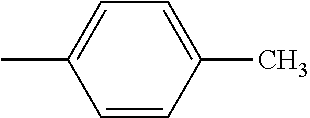
C00015

C00016
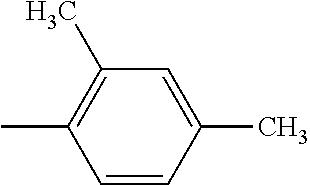
C00017
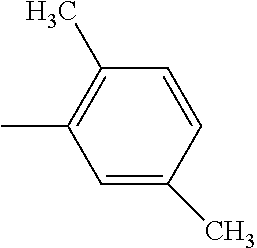
C00018

C00019
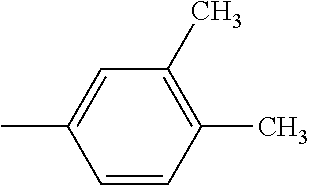
C00020
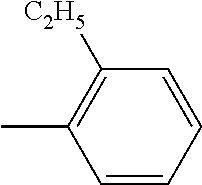
C00021
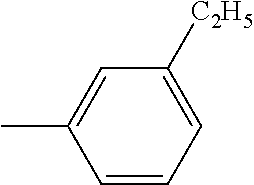
C00022

C00023
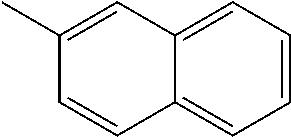
C00024

C00025

C00026

C00027

C00028

C00029
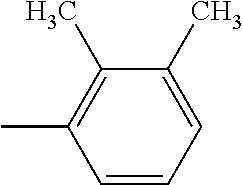
C00030
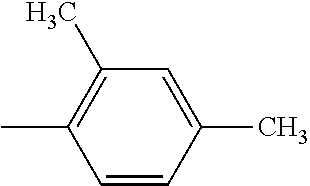
C00031
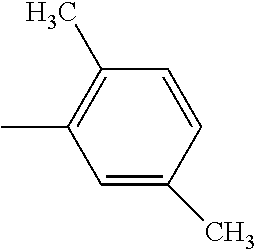
C00032

C00033

C00034
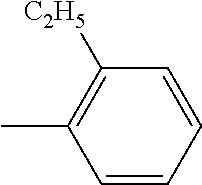
C00035
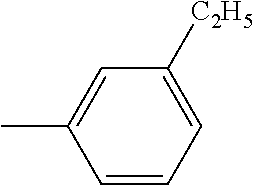
C00036
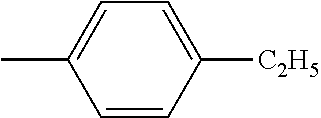
C00037

C00038
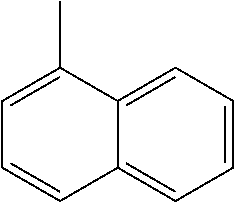
C00039
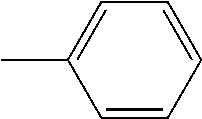
C00040
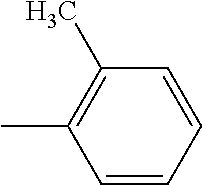
C00041

C00042

C00043

C00044

C00045

C00046
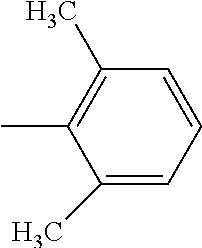
C00047
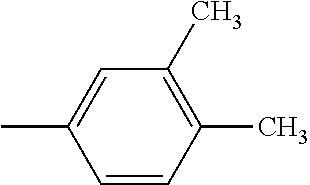
C00048
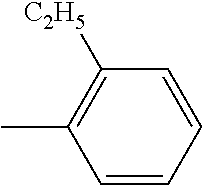
C00049

C00050
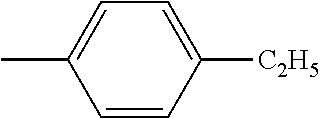
C00051
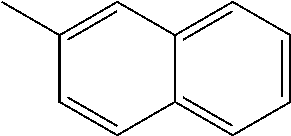
C00052

C00053
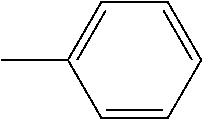
C00054
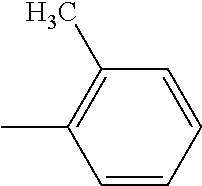
C00055

C00056
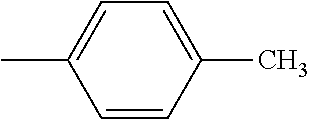
C00057
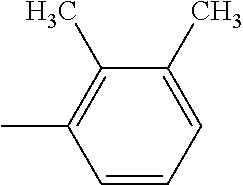
C00058

C00059

C00060

C00061
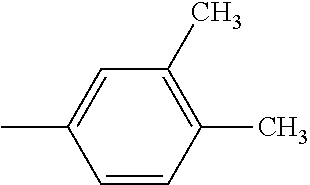
C00062

C00063

C00064
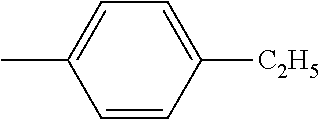
C00065

C00066
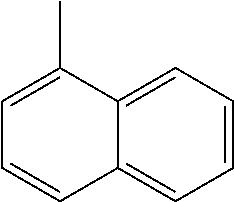
C00067

C00068

C00069

C00070
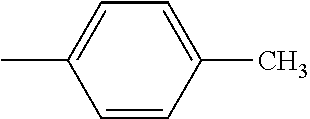
C00071

C00072
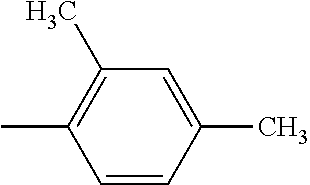
C00073

C00074
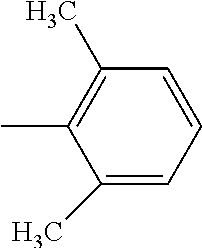
C00075
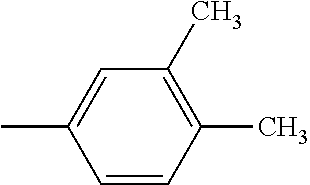
C00076
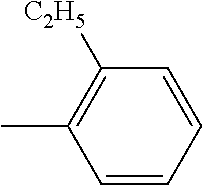
C00077

C00078

C00079

C00080

C00081

C00082

C00083

C00084

C00085
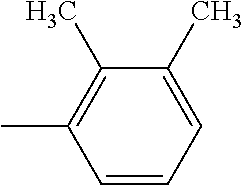
C00086
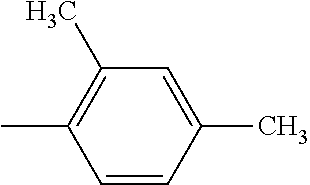
C00087

C00088

C00089
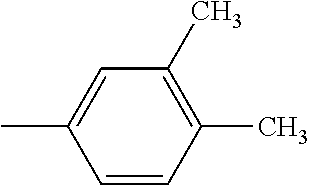
C00090

C00091

C00092
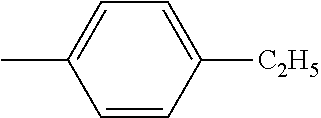
C00093

C00094
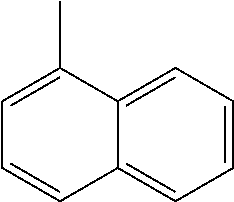
C00095

C00096

C00097
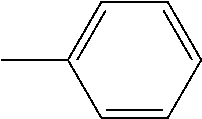
C00098
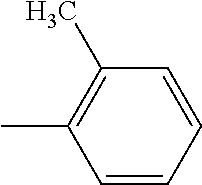
C00099

C00100

C00101
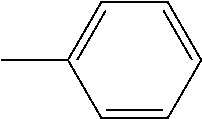
C00102
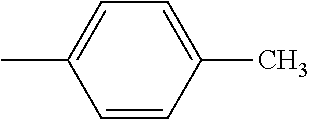
C00103

C00104

C00105
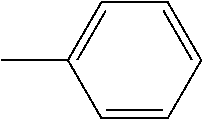
C00106

C00107

C00108

C00109

C00110

C00111

C00112

C00113

C00114
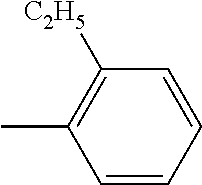
C00115
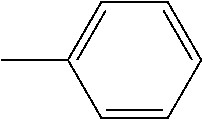
C00116

C00117

C00118
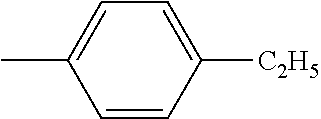
C00119

C00120

C00121
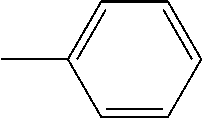
C00122

C00123
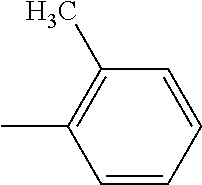
C00124

C00125

C00126

C00127

C00128
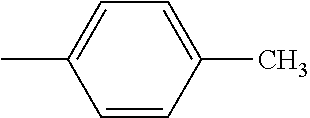
C00129
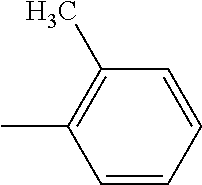
C00130
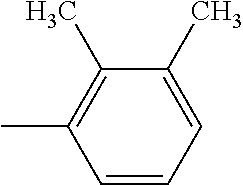
C00131
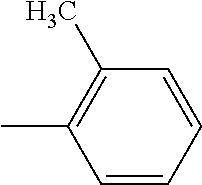
C00132
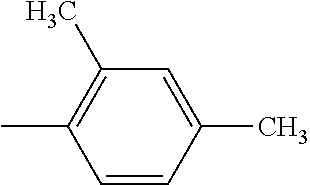
C00133
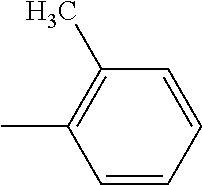
C00134
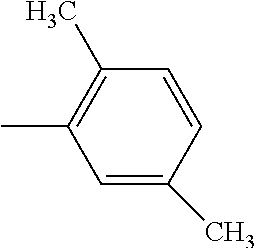
C00135

C00136

C00137
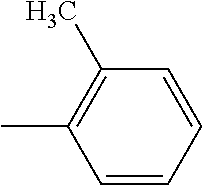
C00138

C00139

C00140

C00141
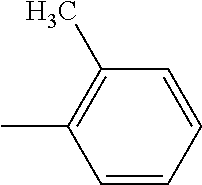
C00142

C00143

C00144

C00145

C00146
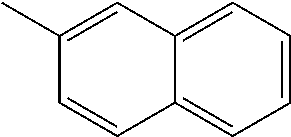
C00147

C00148
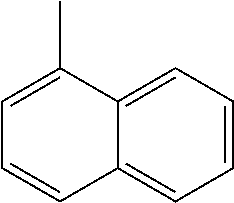
C00149

C00150

C00151
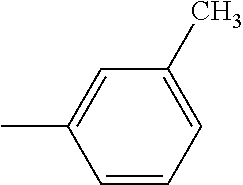
C00152

C00153

C00154
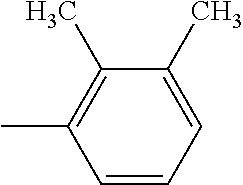
C00155

C00156
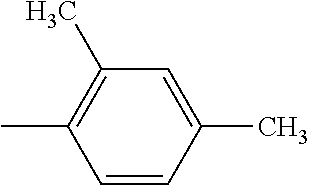
C00157

C00158

C00159

C00160
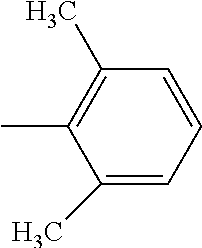
C00161
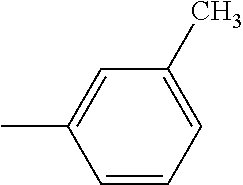
C00162
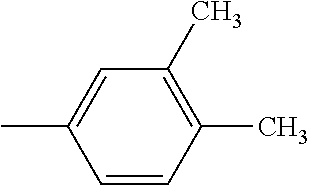
C00163

C00164
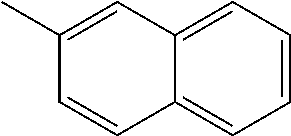
C00165

C00166

C00167

C00168
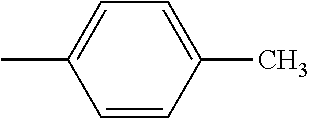
C00169

C00170

C00171

C00172

C00173

C00174

C00175

C00176

C00177
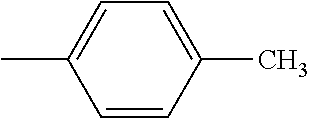
C00178

C00179

C00180
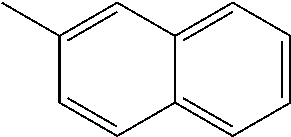
C00181
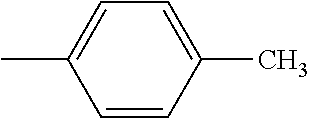
C00182
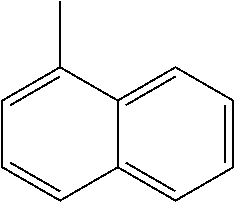
C00183

C00184
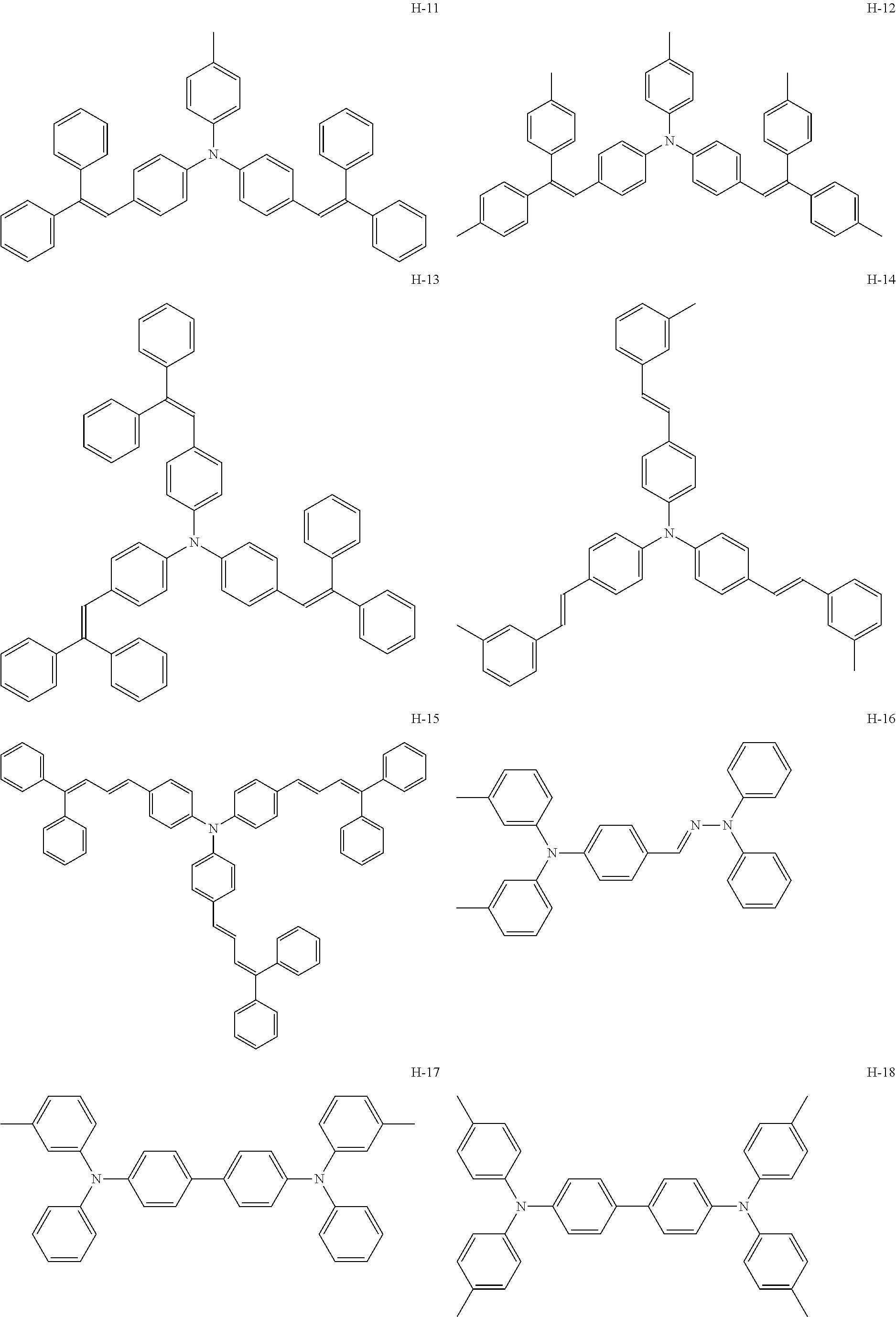
C00185
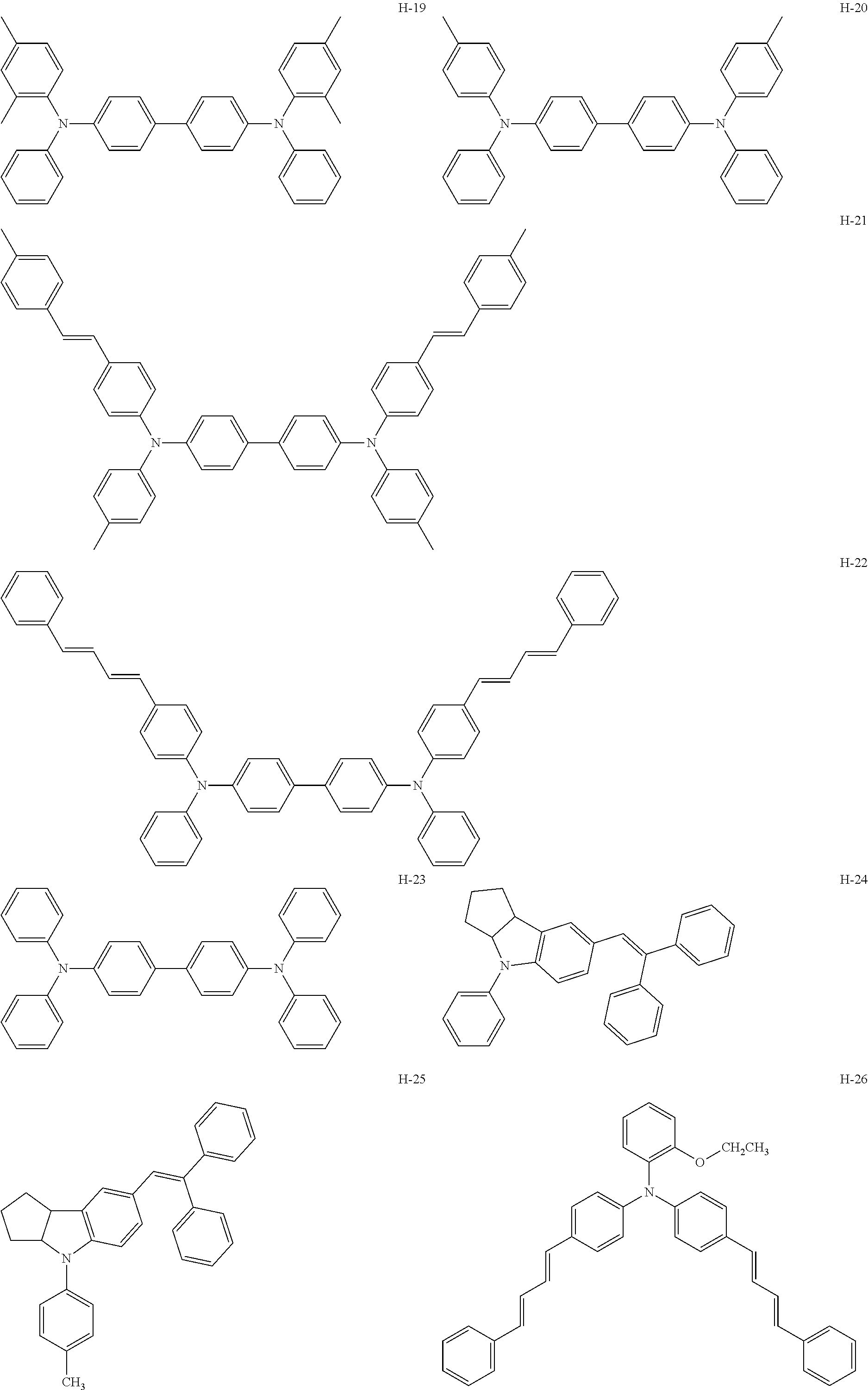
C00186

C00187

C00188

C00189

C00190

C00191

C00192

C00193

C00194

C00195

C00196

C00197

C00198

C00199

C00200

C00201

D00001

D00002

XML
uspto.report is an independent third-party trademark research tool that is not affiliated, endorsed, or sponsored by the United States Patent and Trademark Office (USPTO) or any other governmental organization. The information provided by uspto.report is based on publicly available data at the time of writing and is intended for informational purposes only.
While we strive to provide accurate and up-to-date information, we do not guarantee the accuracy, completeness, reliability, or suitability of the information displayed on this site. The use of this site is at your own risk. Any reliance you place on such information is therefore strictly at your own risk.
All official trademark data, including owner information, should be verified by visiting the official USPTO website at www.uspto.gov. This site is not intended to replace professional legal advice and should not be used as a substitute for consulting with a legal professional who is knowledgeable about trademark law.